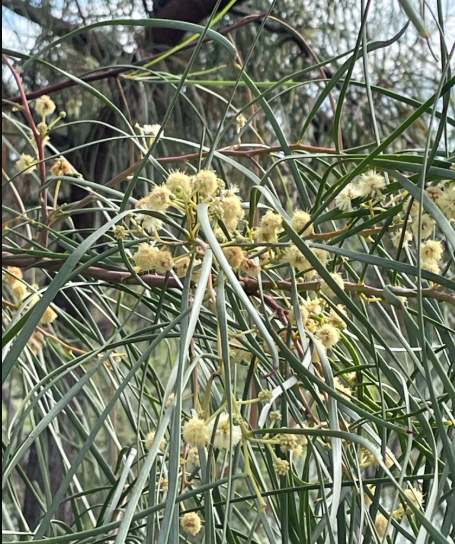Acacia stenophylla seed
Acacia stenophylla, commonly known as Shoestring Acacia, is a graceful, drought-tolerant tree in the Fabaceae (legume) family. Native to Australia, it is found primarily along rivers and floodplains in arid and semi-arid zones. Known for its long, narrow leaves and elegant weeping form, Acacia stenophylla is valued for its ornamental beauty, environmental adaptability, and land rehabilitation potential.
Botanical Description
- Growth Form: A medium-sized tree, typically reaching 6–15 meters tall, with a spreading canopy and pendulous branches.
- Leaves: True leaves are replaced by narrow, strap-like phyllodes (modified leaf stems), giving it a “shoestring” appearance.
- Flowers: Pale yellow, spherical Flower clusters appear in spring and summer.
- seed Pods: Long, twisted brown pods containing several hard seeds.
- Habitat: Grows in seasonally flooded soils, along rivers, creeks, and clay pans; tolerates saline, alkaline, and heavy clay soils.
Primary Uses and Applications
- Land Reclamation and Erosion Control
- Extensively used in revegetation projects, especially in saline, degraded, or flood-prone areas.
- Its deep root system and soil-binding abilities make it effective for controlling erosion and restoring riverbanks.
- Drought-Resistant Landscaping
- Popular in xeriscaping and urban planting due to its:
- Low water requirements
- Heat and drought tolerance
- Attractive weeping form
- Frequently planted in parks, streetscapes, and large gardens in arid regions such as inland Australia, southern California, and parts of the Middle East.
- Shade and Windbreaks
- Its wide canopy offers light shade, suitable for passive cooling and soil moisture retention.
- Used in windbreaks and shelterbelts in farming systems to protect crops and livestock from wind and sun.
Ecological and Environmental Benefits
- Nitrogen Fixation: Like other acacias, A. stenophylla forms symbiotic relationships with nitrogen-fixing bacteria, improving soil fertility and benefiting surrounding vegetation.
- Habitat Creation: Provides habitat and nesting areas for birds, insects, and small mammals.
- Salinity Tolerance: One of the few acacias that thrives in saline environments, making it ideal for salinity mitigation projects.
Wood and Timber Use
- The wood is hard and dark-colored, occasionally used for:
- Fuelwood
- Fencing
- Woodturning or craft
- While not a commercial timber tree, it offers local utility in rural and remote areas.
Traditional and Indigenous Use
- Indigenous Australians have historically used parts of the tree for:
- Food (seeds roasted and ground)
- Tools (from branches and wood)
- Medicinal preparations, although specific medicinal applications of A. stenophylla are less documented compared to other species.
Cultivation and Management
- Growth Rate: Moderate to fast-growing under favorable conditions.
- Soil: Tolerates clay, loam, saline, and poorly drained soils.
- Water: Requires minimal irrigation once established; ideal for rain-fed zones.
- Maintenance: Low-maintenance tree that can thrive without fertilizers or pesticides.
Acacia stenophylla: Uses, Benefits, and Ecological Significance
Limitations and Considerations
- Messy Pods: The seed pods may drop in large quantities, which can be a minor nuisance in urban areas.
- Not ideal for small spaces: Its spreading form and size are best suited for open landscapes.
Conclusion
Acacia stenophylla is a resilient and elegant tree with wide-ranging benefits. From land restoration and salinity control to urban landscaping and biodiversity support, it serves both environmental and aesthetic purposes. Its tolerance for poor soils and arid climates makes it an ideal species for sustainable development in challenging environments. As interest in drought-tolerant and multifunctional trees grows, Acacia stenophylla stands out as a practical and beautiful choice.

